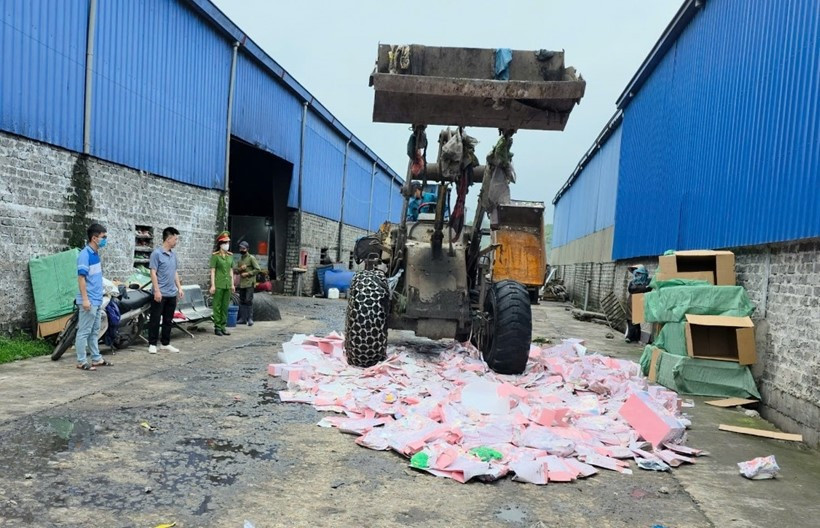
The Economic Police Division of Quang Ninh Provincial Police seized the items from a cargo vehicle. The dolls, packed in boxes labeled in a foreign language, had no accompanying invoices or valid documentation, and the driver was unable to provide any legal proof of import.
After chemical testing, authorities confirmed that the toys contained formaldehyde levels exceeding safe limits, posing a serious health risk - especially to children, who are the primary users of such products.
What is formaldehyde and why is it dangerous?
Associate Professor Tran Hong Con, former lecturer at the Faculty of Chemistry, University of Science (Hanoi), explained that formaldehyde is a colorless, strong-smelling, highly flammable chemical widely used in industry. It’s found in products such as plywood, fiberboard, disinfectants for medical facilities, embalming fluids, textile anti-shrink treatments, and laboratory sterilization.
In toys like stuffed animals, the fabric exterior is often processed with chemicals that may leave behind formaldehyde residue. If these residues exceed safe levels, the chemical becomes highly dangerous.
According to the World Health Organization (WHO), formaldehyde is easily absorbed through the skin, dissolves in water, and evaporates readily into the air, increasing the risk of inhalation. Short-term exposure - even at low concentrations - can irritate the eyes, nose, and throat, causing red eyes, tearing, sneezing, and coughing. At higher concentrations, it can lead to nausea, breathing difficulties, or even suffocation.
Vulnerable groups include children, the elderly, asthma patients, and those with respiratory issues. Children are especially at risk due to their sensitive skin and tendency to chew or suck on toys. Prolonged exposure can lead to skin allergies, respiratory issues, or digestive disorders.
Toxic toys hard to detect without testing
One of the major concerns is that consumers cannot detect formaldehyde contamination by sight or smell alone. The sharp odor can be masked by other chemicals like starch or dyes used in textile finishing. Only specialized testing solutions can accurately determine the presence and concentration of the chemical.
According to Circular 21 issued by the Ministry of Industry and Trade, formaldehyde content in textiles must not exceed 30mg/kg for products intended for children under 36 months, 75mg/kg for products in direct skin contact, and 300mg/kg for items not in contact with skin.
Professor Con recommends that consumers prioritize products with clear origins, labels, and certifications from reputable brands. Authorities should increase inspections and take strict action against unsafe goods. Parents should also teach children to avoid putting toys in their mouths and regularly clean fabric-based toys to minimize risks.
He also advised that newly purchased fabric items, including toys, be washed before use to reduce residual formaldehyde content.
Phuong Thuy